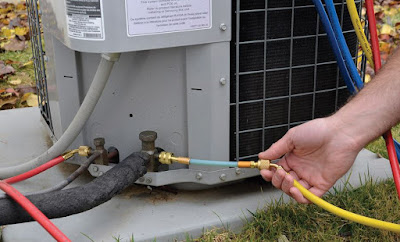The best way to combat refrigerant leaks and prevent your cooling expenses from soaring sky-high is to prevent the problem from happening. Regular inspection of the refrigerant levels will help you address potential problems before they get any worse. Following are some helpful tips:
Possible Refrigerant Leak Causes
There are numerous factors that can result to leaks in your air conditioning system’s coolant. Most common factors include corrosion, aging, and improper unit installation.
• Aging – As your equipment ages, normal wear and tear can take a toll on the piping. When it tears, the pipe will start to leak. The external unit that is exposed to the elements and other environmental contaminants can also experience rusting around the joints. This may also cause leaks.
• Corrosion – The copper tubing in your AC is also prone to corrosion. Formaldehyde or formic acid is often the cause. The substance is found in almost all households. It not only compromises the quality of indoor air. It also eats away the copper tubes in your indoor AC unit.
Formaldehyde or formic corrosion is capable of causing multiple leaks that often result to costly repairs or coil replacements. It is worth-mentioning that extensive rusting may be due to insufficient preventive maintenance. As a result, total replacement of expensive AC parts may be necessary.
Scheduling regular maintenance with a professional like Spartan Plumbing can help prevent the problem. You can also request them to replace your copper coils with aluminium coils that are corrosion-resistant.
• Improper AC Installation – Even if you have a new air conditioning equipment, it can still have a refrigerant leak if it was not properly installed. Any damaged part can also cause a leak.
Signs of Refrigerant Leaks
Complete unit replacement and expensive repairs can be avoided with early detection of a coolant leak. Signs of leaks include the following:
• Higher Energy Bill – If you notice a sudden spike in your cooling expenses, this may be due to a defective air conditioning unit. When your AC doesn’t provide sufficient cooling, the tendency is to adjust the thermostat. While this may help cool your home more quickly, it can increase your power consumption, further contributing to a higher energy bill.
• It Takes Longer to Cool Your Home – In summer, the coolant absorbs the indoor heat, then releases it outside. If it takes a longer time to cool your home than usual, it may mean a low refrigerant level.
• Vents Releasing Warm Air – Try putting your hand on the vents to see if the temperature of the released air is cool. If it is warm, it is a sign of a low refrigerant level.
• Ice Forming on the AC Coils – Low refrigerant levels will keep the indoor unit’s coils from absorbing a sufficient amount of heat, resulting to frozen coils. In most cases, you will only notice the problem once the ice starts to melt and drip on the floor.
• Unusual Sounds from Indoor Unit – If you hear hissing sounds in your indoor unit, it may be coming from rusted copper coils. Louder bubbling sounds may be a tell-tale sign of a more serious leakage.
Frozen coils may also be a sign of a bigger problem like a defective compressor. Call Spartan Plumbing right away to prevent further damage.
Fixing Refrigerant Leaks
Preventive maintenance is the best deterrent to refrigerant leaks, and subsequent replacement or repair expenses. A small AC refrigerant leak may be easy to repair. But, if the damage is extensive, it is best handled by a professional HVAC technician.
Can an AC Refrigerant Leaks Increase Cooling Expenses? syndicated from https://handymechanical.home.blog


No comments:
Post a Comment